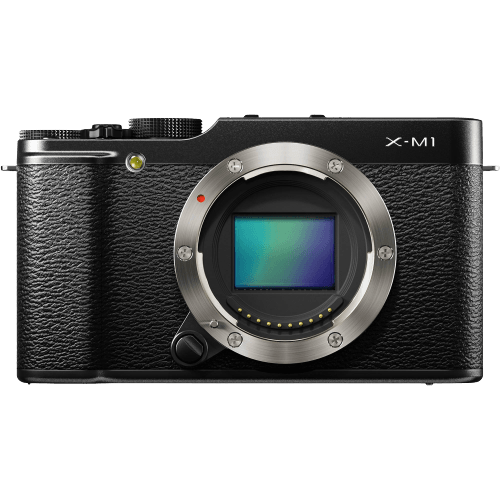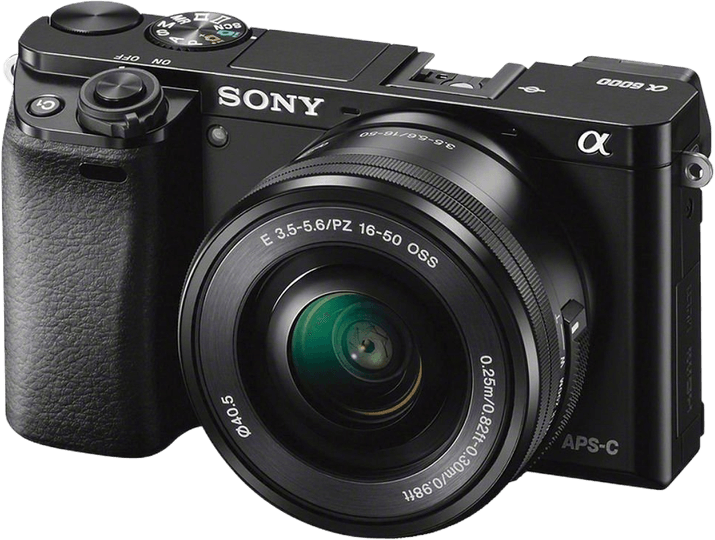Fujifilm X-M1 vs Sony a6000 Comparison
Fujifilm X-M1

Sony a6000

The Sony a6000 outperforms the Fujifilm X-M1 with a score of 57/100 compared to 51/100. Both cameras share similarities as mirrorless cameras released in 2014 and 2016, with launch prices of $799 and $700, respectively. The dimensions are almost identical, with the Sony a6000 being slightly larger and heavier.
The winning Sony a6000 stands out with its higher score, reflecting its superior overall performance. On the other hand, the Fujifilm X-M1 is slightly smaller and lighter, which could be an advantage for some users.
Taking into account these specifications, the Sony a6000 is the better choice for most photographers, while the Fujifilm X-M1 may appeal to those who prioritize a more compact and lightweight camera.
Fujifilm X-M1 vs Sony a6000 Overview and Optics
The Sony a6000 outperforms the Fujifilm X-M1 in optics, with a score of 67/100 compared to the X-M1’s 53/100. Both cameras share common specifications, including a CMOS sensor, APS-C sensor size, and the absence of image stabilization. They also have different lens mounts, with the X-M1 using Fujifilm X and the a6000 using Sony E.
The Sony a6000 has several advantages over the Fujifilm X-M1. Its 24.3-megapixel resolution surpasses the X-M1’s 16 megapixels, allowing for more detailed images. Additionally, the a6000 boasts a faster shooting speed of 11 frames per second compared to the X-M1’s 5.6, enabling quicker capture of action shots. The Sony a6000 also benefits from a higher DXOMARK sensor score of 82, which is not available for the Fujifilm X-M1 as DXOMARK does not score Fujifilm cameras.
While the Fujifilm X-M1 falls short in several aspects, it still has its merits. Its EXR Processor II allows for decent image processing, although it may not be as advanced as the Sony a6000’s Bionz X processor. The X-M1 also supports the Fujifilm X lens mount, which offers a range of high-quality lenses for various photography needs.
Given the comparison, the Sony a6000 proves to be the superior camera in terms of optics. Its higher resolution, faster shooting speed, and better sensor score contribute to its overall higher performance. The Fujifilm X-M1, on the other hand, offers a satisfactory experience for those who prefer the Fujifilm X lens mount and do not require the advanced features of the a6000.
Fujifilm X-M1 vs Sony a6000 Video Performance
The Sony a6000 emerges as the winner in the video capabilities comparison, with a video score of 56, while the Fujifilm X-M1 scores 43. Both cameras share some common specifications in this regard, notably the maximum video resolution of Full HD and maximum video dimensions of 1920 x 1080. Additionally, neither camera has built-in time-lapse functionality.
The Sony a6000 outperforms the Fujifilm X-M1 in terms of its maximum video frame rate, offering 60fps compared to the X-M1’s 30fps. This higher frame rate allows the a6000 to capture smoother and more detailed video, particularly in fast-paced scenes or during action shots. This advantage makes the a6000 a more suitable choice for users who prioritize video performance in their camera selection.
While the Fujifilm X-M1 does not outperform the Sony a6000 in any specific video specification, it is important to note that both cameras have the same maximum video resolution and dimensions. This means that the X-M1 is still capable of capturing high-quality video, albeit at a lower frame rate than the a6000. Users who do not require the higher frame rate offered by the a6000 may still find the X-M1 to be a suitable option for their video needs.
Comparing the video capabilities of these two cameras, it is clear that the Sony a6000 is the superior choice for users who prioritize video performance. With a higher frame rate and overall better video score, the a6000 stands out in this category. However, the Fujifilm X-M1 remains a viable option for those who do not require the additional frame rate and can still deliver high-quality video results.
Fujifilm X-M1 vs Sony a6000 Features and Benefits
The Fujifilm X-M1 outperforms the Sony a6000 in features, scoring 54/100 compared to the Sony’s 41/100. Both cameras share several specifications, including a 3-inch screen size, similar screen resolutions (920,000 dots for the Fujifilm and 921,600 dots for the Sony), no touchscreen capabilities, flip screens, no GPS, and WIFI connectivity.
The Fujifilm X-M1 surpasses the Sony a6000 with its Bluetooth capabilities, which the Sony a6000 lacks. This feature allows for easier and faster wireless connectivity to other devices, providing an edge for photographers who need quick and seamless data transfers.
On the other hand, the Sony a6000 holds a slight advantage in screen resolution, with 921,600 dots compared to the Fujifilm’s 920,000 dots. However, this difference is minimal and may not significantly impact the user experience.
Fujifilm X-M1’s higher feature score and Bluetooth capabilities make it a better choice for those who prioritize wireless connectivity and overall features. The Sony a6000’s slightly higher screen resolution is not enough to outweigh the advantages of the Fujifilm X-M1. Therefore, the Fujifilm X-M1 is the better camera in terms of features, providing users with a more convenient and versatile experience.
Fujifilm X-M1 vs Sony a6000 Storage and Battery
The Fujifilm X-M1 and Sony a6000 have identical storage and battery scores, both receiving 21/100. They share several common specifications, including having one memory card slot and lacking USB charging capabilities. Both cameras accept SD, SDHC, and SDXC (UHS-I compatible) memory cards. However, the Sony a6000 also supports Memory Stick Pro Duo and Pro-HG Duo cards, providing more storage options.
In terms of battery life, the Sony a6000 has a slight advantage with 360 shots per charge, compared to the Fujifilm X-M1’s 350 shots. The a6000 uses an NP-FW50 battery, while the X-M1 utilizes an NP-W126 battery. Despite the minimal difference in battery life, the a6000 stands out as the better choice for longer shooting sessions.
There are no aspects where the Fujifilm X-M1 outperforms the Sony a6000 in storage and battery. Both cameras have the same score and similar specifications, but the a6000’s additional memory card compatibility and marginally longer battery life make it a slightly better option in this category.
Fujifilm X-M1 vs Sony a6000 – Our Verdict
Are you still undecided about which camera is right for you? Have a look at these popular comparisons that feature the Fujifilm X-M1 or the Sony a6000:

